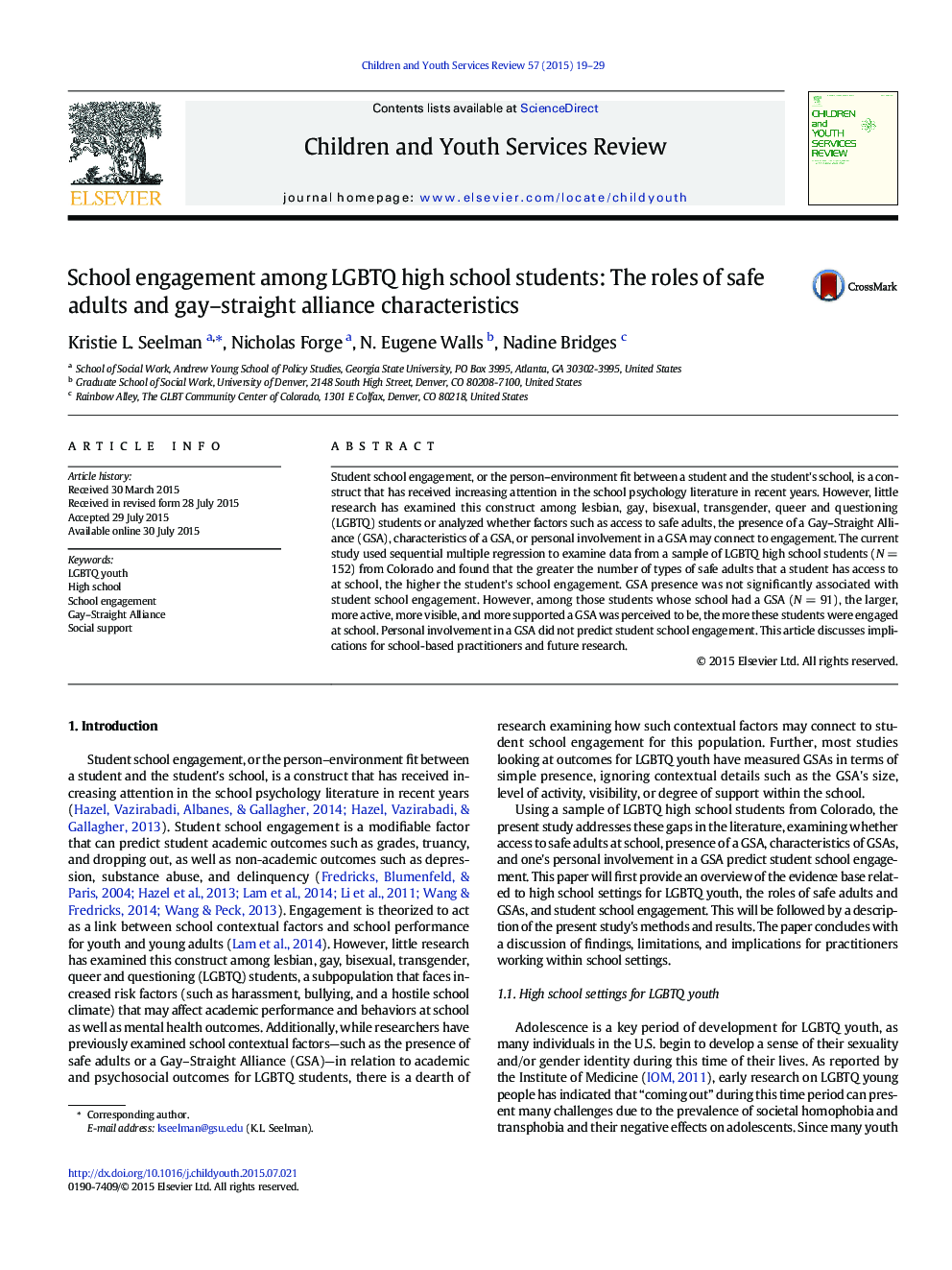| Article ID | Journal | Published Year | Pages | File Type |
|---|---|---|---|---|
| 6833922 | Children and Youth Services Review | 2015 | 11 Pages |
Abstract
Student school engagement, or the person-environment fit between a student and the student's school, is a construct that has received increasing attention in the school psychology literature in recent years. However, little research has examined this construct among lesbian, gay, bisexual, transgender, queer and questioning (LGBTQ) students or analyzed whether factors such as access to safe adults, the presence of a Gay-Straight Alliance (GSA), characteristics of a GSA, or personal involvement in a GSA may connect to engagement. The current study used sequential multiple regression to examine data from a sample of LGBTQ high school students (NÂ =Â 152) from Colorado and found that the greater the number of types of safe adults that a student has access to at school, the higher the student's school engagement. GSA presence was not significantly associated with student school engagement. However, among those students whose school had a GSA (NÂ =Â 91), the larger, more active, more visible, and more supported a GSA was perceived to be, the more these students were engaged at school. Personal involvement in a GSA did not predict student school engagement. This article discusses implications for school-based practitioners and future research.
Related Topics
Health Sciences
Medicine and Dentistry
Perinatology, Pediatrics and Child Health
Authors
Kristie L. Seelman, Nicholas Forge, N. Eugene Walls, Nadine Bridges,
